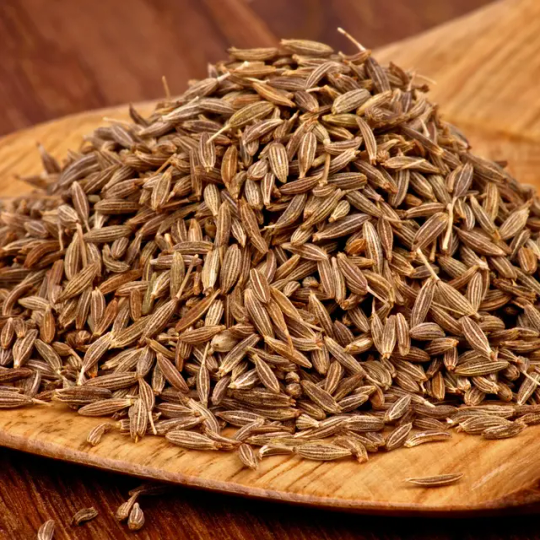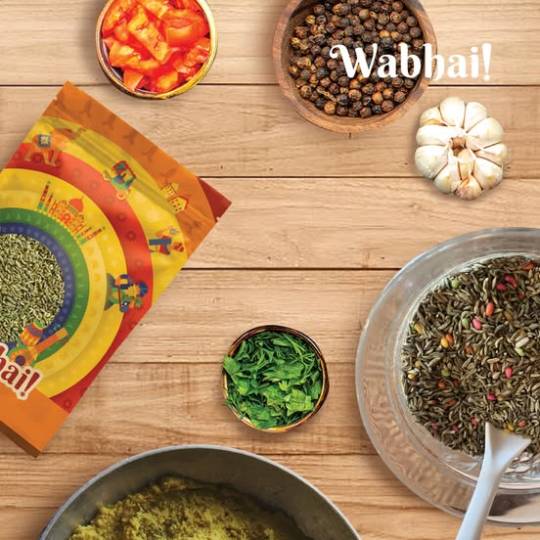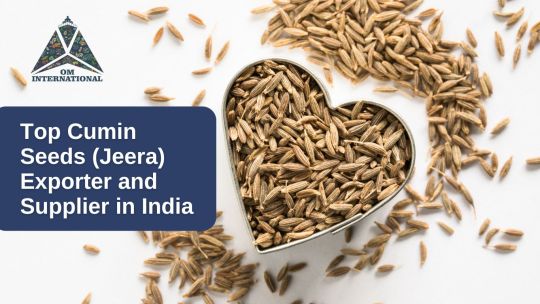#organic cumin seed
Explore tagged Tumblr posts
Text

#Aromatic Cumin#Cumin#Organic Cumin#Organic Cumin seed#Natural Zeera#Warm spices#Spice#Aromatic Cumin Exporter#Organic Cumin Supplier#Organic Cumin Powder#Cumin Powder#Exporter#India
0 notes
Text
#fresh vegetable#natural wheat flour#fresh moong whole#organic cumin seed#exporters#suppliers#ahmedabad#gujarat#india
1 note
·
View note
Text
My throaaaat hurts
#would have called out of work this morning but time off blackout because busy season#i can still miss work but i cant use vacation to cover it#and its a rent paycheck#and rent is. 100% of my rent paycheck. so. cant miss any pay on rent paychecks. not an option#i thought i had a fever all day because i would alternate between chills and getting super hot#like need to take off my shirt hot#but i couldnt find my thermometer#swung by the grocery store to buy a new one on the way home and it tells me im 94 degrees#sure jan#hopefully the act of having purchased a new one will make the old one turn up#i also tried to pick up caraway seed and lemon zest for caraway seed cake but the grocery store doesnt sell dried lemon peel anymore?#like at all?#and the only caraway seed option is gourmet organic and $10 for a 2oz jar#i would use a third of the jar for one batch#for reference the old brand that i bought i would use the whole jar and it cost $1.25#so uuuuuuh yeah im not paying that#especially since i looked it up and i can order mccormick caraway seed by the pound for less per oz than i was paying before lmfao#they also made it so that fennel seed is only available in the gourmet organic brand -- $8 for a 1.7oz jar#im not paying that either thats highway robbery prices#i might as well just buy the fancy italian sausage#which is why i started buying fennel seed in the first place. to add to ground pork to make it taste like italian sausage#i bet i can find a better option for that from a known company online too#i dont know what they were thinking doing away with the other brand#it was a local company and it offered lots of options at reasonable prices#now theyve got like. the most basic assortment#oregano. basil. cumin. cinnamon. thyme. rosemary. garlic powder#just as i was starting to experiment with more interesting spices too
4 notes
·
View notes
Text
Buy Organic Ground Spices – Online Spice Store in USA
Discover powdered perfection at your spice store near me! Shop hing powder, ground coriander, ground ginger, turmeric powder, and roasted ground cumin today!

#coriander seeds ground#chole masala#methi (fenugreek) seeds#buy black salt#organic ground spices#online spice company and spice store in usa#where to buy masala online usa#tandoori masala online#kashmiri chili powder where to buy#organic whole spices#spice company online usa#kashmiri chili where to buy#best indian masala online usa#foxnuts#ground cumin#yellow mustard seeds#buy fresh spices online usa#indian spices wholesale usa#best spice store near me#ground ginger
0 notes
Text
#Organic Whole Cumin Seeds#Cumin Seeds#Organic Cumin Seeds#Whole Cumin Seeds#Organic Whole Cumin Seeds Exporter#Organic Cumin Seeds Supplier#Cumin Seeds Supplier#Exporter#India
0 notes
Text
Buy Organic Cumin Seeds Online - Jeera Seeds at Best Price | Premium Indian Spice
Explore premium organic cumin seeds and jeera seeds for all your culinary needs. Shop the finest cumin seeds online at competitive prices. Known for their rich aroma and health benefits, our jeera is the perfect addition to your kitchen. Whether you’re looking for white cumin seeds or the classic jeera Indian spice, we offer the best quality to enhance your dishes. Check out our cumin seeds price and enjoy convenient delivery when you buy cumin seeds or jeera online from our trusted store. Add authentic flavors to your meals with top-grade cumin seeds!
#organic cumin seeds#jeera seeds#Cumin seeds#cumin seeds online#cumin seeds price#buy cumin seeds#jeera online#white cumin seeds#jeera indian spice
0 notes
Text
Barter International is well founded exporter of cumin seeds, coriander seeds, sesame seeds from Rajkot, Gujarat (India). Also importing drywall screws, drywall tape, self drilling screws, and potassium humate.
#cumin seeds exporter#coriander seeds exporter#cumin supplier#spices export from india#cumin for cooking#coriander seeds supplier#bulk cumin seed#bulk coriander export#organic cumin seeds#organic coriander seeds#high-quality cumin seeds#coriander seeds wholesale#export cumin seeds#coriander seed globally
0 notes
Text
Top Cumin Seeds Exporter and Supplier in India – Om International

Cumin seeds, known for their distinct flavor and wide range of health benefits, hold a significant place in Indian cuisine and traditional medicine. As one of the most sought-after spices worldwide, the demand for high-quality cumin seeds continues to grow. At the forefront of this supply chain is Om International, a leading exporter and supplier of premium cumin seeds from India.
The Importance of Cumin Seeds
Cumin seeds (Cuminum cyminum) are a staple in many cuisines, particularly in Indian, Middle Eastern, and Mediterranean dishes. They are known for their warm, earthy flavor and are used both whole and ground. Beyond their culinary uses, cumin seeds have been valued for their medicinal properties. Rich in iron, magnesium, and antioxidants, cumin seeds aid digestion, improve immunity, and support overall health.
Why India?
India is the largest producer and exporter of cumin seeds in the world, accounting for a significant portion of global production. The favorable climate, fertile soil, and traditional farming techniques in regions like Gujarat and Rajasthan contribute to the superior quality of Indian cumin seeds. These regions produce cumin with high essential oil content, enhancing both flavor and aroma.
Om International: A Trusted Name in Cumin Seed Export
Om International has established itself as a top exporter and supplier of cumin seeds from India. With a deep understanding of global market demands and a commitment to quality, the company has built a strong reputation in the spice industry.
Quality Assurance: Om International is dedicated to providing cumin seeds of the highest quality. The seeds are sourced from trusted farmers who use organic and sustainable farming practices. Each batch undergoes stringent quality checks to ensure it meets international standards in terms of purity, flavor, and aroma.
State-of-the-Art Processing: To maintain the integrity and quality of the cumin seeds, Om International utilizes advanced processing techniques. The seeds are cleaned, sorted, and packaged in hygienic conditions to preserve their freshness and nutritional value. The company also offers customized packaging solutions to meet the specific requirements of clients.
Global Reach: Om International has a wide distribution network that spans across continents. The company exports cumin seeds to countries in North America, Europe, the Middle East, and Asia, catering to a diverse range of customers including wholesalers, retailers, and food manufacturers.
Commitment to Sustainability: Sustainability is at the core of Om International’s operations. The company supports eco-friendly farming practices and ensures fair trade by working closely with local farmers. This commitment not only helps in producing high-quality cumin seeds but also contributes to the well-being of the farming communities.
Applications of Cumin Seeds
Cumin seeds are incredibly versatile and are used in a variety of applications:
Culinary Uses: Cumin seeds are a key ingredient in many spice blends, such as garam masala, curry powder, and chili powder. They are also used in pickles, sauces, and soups, adding depth and warmth to dishes.
Medicinal Uses: In traditional medicine, cumin seeds are used to treat digestive disorders, respiratory issues, and skin conditions. The seeds are also known to boost immunity and promote weight loss.
Aromatherapy: The essential oil extracted from cumin seeds is used in aromatherapy to relieve stress and improve mental clarity.
Conclusion
As the top cumin seeds exporter and supplier in India, Om International continues to set benchmarks in quality, service, and sustainability. Whether you are a global wholesaler, a food manufacturer, or a retailer, partnering with Om International ensures you receive the finest cumin seeds that meet your exact needs. With a strong commitment to excellence and a focus on building long-term relationships, Om International is your trusted partner in the world of spices.
#Best cumin seeds exporters in India#Top cumin seeds suppliers from India#High-quality cumin seeds export from India#Organic cumin seeds suppliers in India#Leading cumin seeds exporter for global markets#Premium cumin seeds supplier in Gujarat#Bulk cumin seeds export from India#Sustainable cumin seeds farming in India#Cumin seeds with high essential oil content#Trusted cumin seeds suppliers for international trade#Wholesale cumin seeds suppliers in India#India's top exporters of cumin seeds#ISO certified cumin seeds exporter from India#Best cumin seeds suppliers for food manufacturers#Top cumin seeds exporters to Europe and North America
0 notes
Text
#organic cumin seeds manufacturers#organic cumin seeds suppliers#organic cumin seeds exporters#cumin seeds from india#cumin seeds powder manufacturers
0 notes
Text

#Agricultural Product Exporter from India#Organic Product Supplier from Haryana#Onion#Mango#1121 Basmati Rice#Pusa Basmati Rice#Cumin Seeds#Turmeric powder#Buffalo Ghee#Red chili powder
0 notes
Text

#Organic farming Cumin Seeds and Powder Manufacturer in Bhopal#Eco-Friendly Harvesting Cumin Seeds and Powder Exporter in India#Pure Soyb Cumin Seeds and Powder Supply in Bhopal#Chemical-free Cumin Seeds and Powder Produce in Bhopal
0 notes
Text
#Aromatic Cumin#Cumin#Organic Cumin#Organic Cumin seed#Natural Zeera#Warm spices#Spice#Aromatic Cumin Exporter#Organic Cumin Supplier#Organic Cumin Powder#Cumin Powder#Exporter#India
0 notes
Text
How Organic Black Cumin Supports Immune System Health

Introduction:
In the realm of natural remedies, organic black cumin emerges as a shining star, renowned for its potent health benefits. Derived from the seeds of the Nigella sativa plant, this tiny yet mighty spice has been treasured for centuries for its medicinal properties. Let's explore how organic black cumin boosts immune system health and overall well-being.
Understanding Organic Black Cumin:
Black cumin, also known as black cumin seed or nigella seed, boasts a rich history dating back to ancient civilizations like Egypt and Mesopotamia. Its distinctive aroma and flavor make it a prized ingredient in culinary traditions around the world. Rich in essential nutrients such as vitamins B and E, as well as minerals like iron and copper, black cumin seeds offers a nutritional punch that can enhance overall health. The seeds contain potent bioactive compounds, including thymoquinone, which is attributed to many of its health benefits.
Immune-Boosting Properties:
One of the standout features of cumin seeds is its ability to support immune system function. Packed with antioxidants, including thymoquinone, it helps combat oxidative stress and free radical damage, which are known to weaken the immune system. Studies have shown that thymoquinone exhibits potent anti-inflammatory and immunomodulatory effects, making black cumin a valuable ally in promoting immune resilience. Additionally, black cumin seeds contain antimicrobial properties that can help fend off harmful pathogens and infections, further bolstering the body's defenses.
Enhancing Respiratory Health:
In addition to its immune-boosting properties, black cumin has been revered for its ability to promote respiratory health. Its anti-inflammatory and antimicrobial properties make it a valuable ally in combating respiratory conditions such as asthma, bronchitis, and allergies. Research suggests that black cumin seeds may help reduce inflammation in the airways, improve lung function, and alleviate symptoms of respiratory ailments. Furthermore, organic black cumin has been used in traditional medicine to relieve coughs and congestion, offering natural relief for respiratory discomfort.
Supporting Digestive Wellness:
A healthy immune system starts in the gut, and black cumin can play a pivotal role in supporting digestive wellness. Its carminative properties aid in digestion and relieve gastrointestinal discomfort. Moreover, cumin seed has been shown to possess anti-inflammatory effects on the gut, making it beneficial for individuals dealing with digestive issues like bloating, indigestion, and irritable bowel syndrome (IBS). Additionally, black cumin seeds oil has been used traditionally to alleviate symptoms of indigestion and promote overall digestive health. Its antimicrobial properties may also help maintain a healthy balance of gut bacteria, supporting optimal digestion and nutrient absorption.
Harnessing the Power of Organic Black Cumin:
Incorporating black cumin into your daily diet is easier than you might think. Sprinkle black cumin seeds onto salads, soups, or yogurt for a flavorful and nutritious boost. Alternatively, infuse black cumin oil into your cooking or enjoy it as a supplement for a concentrated dose of health-promoting compounds. Whether consumed as seeds, oil, or supplements, organic black cumin can be a versatile addition to your wellness routine.
Culinary Delights with Organic Black Cumin:
Aside from its medicinal properties, black cumin adds depth and flavor to a variety of dishes. Its nutty, earthy flavor profile pairs well with savory and spicy dishes, making it a popular ingredient in cuisines around the world. From curries and stews to bread and pastries, organic black cumin adds a distinctive aroma and taste that elevates any dish. Experiment with different culinary creations to experience the culinary delights of black cumin firsthand.
The Promise of Organic Black Cumin:
Black cumin seeds stands as a testament to the remarkable healing potential found in nature's bounty. From bolstering immune system health to supporting respiratory and digestive wellness, its benefits are truly extraordinary. Embrace the power of organic black cumin and experience the transformative effects it can have on your overall well-being.
Premium Quality from Kisan Agro:
For premium-quality organic black cumin seeds and products, trust Kisan Agro. We are committed to providing the finest selection of organic spices and ingredients to enhance your health and culinary experiences. Contact us at [email protected] to discover the benefits of black cumin seeds and explore our range of high-quality products.
Sustainability and Ethical Sourcing:
At Kisan Agro, we prioritize sustainability and ethical sourcing practices. Our organic black cumin is sourced from trusted farmers who adhere to environmentally friendly farming methods and fair labor practices. By choosing Kisan Agro, you can support sustainable agriculture and ethical business practices while enjoying the numerous health benefits of organic black cumin seeds.
Join the Organic Black Cumin Revolution: Join us in embracing the organic black cumin revolution and prioritize your health and well-being. Incorporate black cumin seeds into your daily routine and experience the transformative effects firsthand. With Kisan Agro's premium-quality products, you can embark on a journey towards better health and vitality.
0 notes
Text

https://lacure.com.my/product/bath-care/lacure-dead-sea-black-cumin-seed-soap/
Organic Dead Sea Black Cumin Seed Soap | Acne-Prone Skin
Are you tired of a relentless acne problem? get rid out of it today with organic dead sea black cumin seed soap. Show now and get a acne-prone Skin
#organic dead sea black cumin seed soap#black cumin seed soap#lacure facial kit combo#black seed herbal soap
0 notes
Text
Wabhai Foods Best Place to Buy Indian Masala Online
Wabhai Foods offers premium chole masala, rajwadi garam masala, tandoori masala, and chaat masala online. Enhance your dishes with authentic Indian spices! Enhance your dishes with Wabhai Foods' hing powder and asafetida ground. Add a pungent, aromatic touch to elevate the depth and richness of your cooking!

#authentic indian spices usa#organic spices online usa#kashmiri chilis#where can i buy chaat masala#organic mustard seeds#white sesame seeds online#indian whole spices#shop black salt#chaat masala whole foods#high-quality spices online usa#organic spice blends#whole coriander seeds#online spice store#roasted ground cumin
0 notes
Text





Best Organic Seeds Wholesaler at Reasonable Price - Adinath India
We know that it is difficult to find some trustworthy organic seed wholesaler online but as a responsible Adinath India is trying its best to solve this problem by providing quality organic seeds at the best prices with on-time delivery. Get the best deals on farm or garden seeds like chia, basil, cumin & more seeds online.
0 notes